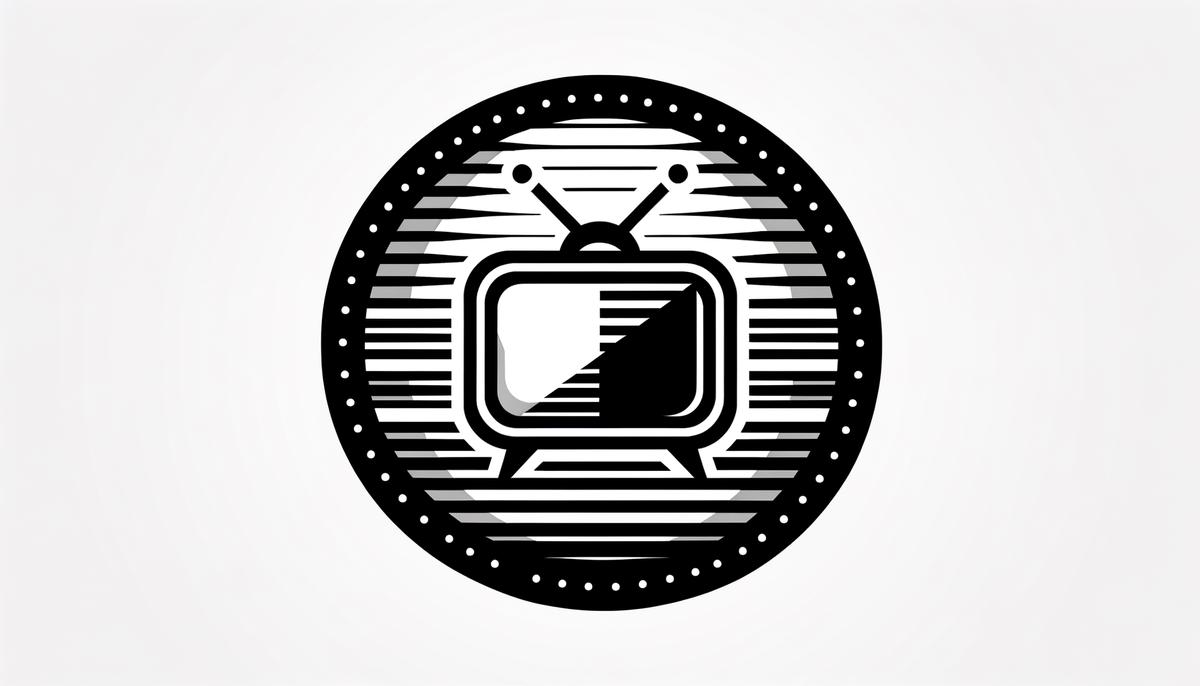The CW Network has transformed the way it delivers shows to its audience since its inception in 2006. Known for captivating series like “Arrow,” “The Flash,” and “Riverdale,” the network has shifted from traditional broadcasting to embracing the digital realm. This piece examines the evolution of The CW’s distribution methods, focusing on its strategic decisions amidst technological advancements and changing viewer preferences. By exploring these changes, we gain insights into how The CW continues to engage its core audience while reaching new viewers.
Evolution of The CW Network Distribution
The CW Network, known for popular shows like “Arrow,” “The Flash,” and “Riverdale,” has undergone significant changes in how it brings content to its viewers. Founded in 2006 as a joint venture between Warner Bros. and CBS, The CW initially followed a traditional broadcast model. This approach meant airing shows at scheduled times on TVs. But as technology and viewer habits evolved, so did The CW’s distribution strategy.
Initially, The CW aimed to capture the young adult demographic, relying on linear TV broadcasting. However, the rise of the internet and mobile devices ushered in a new era of content consumption. The CW recognized early on the importance of catering to a digitally savvy audience. By 2012, it had begun making moves toward digital expansion by offering full episodes on its website the day after airing.
The introduction of The CW app in 2016 marked a significant pivot towards digital distribution. This free, ad-supported platform allowed users to watch full episodes of their favorite shows on demand, without the need for a cable subscription. The app was compatible with various devices, including smartphones, tablets, and smart TVs, reflecting The CW’s commitment to accessibility and meeting viewers where they were.
One of The CW’s most strategic moves came in 2019, when it decided not to renew its deal with Netflix, which had previously allowed the streaming giant to offer entire seasons of The CW’s shows after their broadcast finales. This decision was part of a larger trend among content producers to reclaim their properties for direct-to-consumer offerings. Instead of relying on Netflix, The CW began to push content through its own platforms, doubling down on the CW app and its website. Additionally, it formed a new parent company, Warner Bros. Discovery, which plans to launch its own streaming service combining content from The CW, Warner Bros., and other sources.
The shift away from traditional TV also allowed The CW to experiment with different content formats and distribution strategies. Recognizing the growing trend of binge-watching, The CW started releasing certain shows in a “stacking” model, where all episodes of a season are available at once, mimicking the binge-able nature of streaming platforms.
However, despite its digital strides, The CW has not abandoned traditional broadcast altogether. It continues to operate as a television network with affiliates across the United States, broadcasting new episodes weekly. This dual approach caters to both traditional TV viewers and digital-first audiences, ensuring broad accessibility to its content.
Through these strategic changes in distribution, The CW has adapted to the evolving media landscape. It has managed to maintain its core audience while expanding its reach to new viewers, illustrating the network’s agility in navigating the complexities of modern content distribution.

Current Carriers of The CW Network
Expanding beyond these foundational shifts, The CW Network has strategically placed its content across a variety of platforms to ensure wide accessibility and viewer engagement. Amid the changing tides of content consumption, The CW has not only maintained its presence on traditional cable but also strengthened its reach through live TV streaming services. Platforms such as Hulu with Live TV, YouTube TV, and AT&T TV Now play a crucial role in broadcasting The CW’s live content, especially appealing to those who prefer the immediacy of live TV without the commitment to traditional cable subscriptions. These services cater to a mobile-first audience, allowing viewers the flexibility to watch their favorite CW shows anytime and anywhere, aligning with modern viewing habits.
Furthermore, The CW’s foray into free ad-supported streaming platforms, notably its own The CW app, underscores the network’s commitment to accessibility. This move is complemented by partnerships with services like Pluto TV and The Roku Channel, which offer select CW content on-demand. These platforms serve as an additional gateway for viewers who might have missed live broadcasts or prefer the on-demand model of consumption. By distributing content across these diverse platforms, The CW ensures it meets viewers where they are, be it live TV, on-demand, or through free streaming avenues.
In addition to these platforms, The CW has made strategic decisions in its content syndication to bolster its reach. By retracting from broader streaming deals, such as the one previously held with Netflix, The CW has regained control over its content distribution. This strategy allows for a more curated approach to where and how The CW’s series are available post-broadcast. The network’s content now populates its platforms first, reinforcing the value of The CW app and website as primary destinations for fans. This consolidated approach to distribution ensures that while The CW evolves with the media landscape, it retains a direct line to its audience, reinforcing viewer habits and network loyalty.
These multifaceted platforms carrying The CW Network showcase the network’s adaptive strategies in a competitive and fragmented media environment. By casting a wide net across traditional cable, live TV streaming services, free ad-supported platforms, and strategic content syndication, The CW not only secures its existing audience base but also taps into new segments. This holistic approach to distribution demonstrates The CW’s resilience and flexibility, ensuring its content remains accessible, engaging, and relevant in the digital age.

The Future of The CW Network Distribution
As The CW Network advances in a rapidly changing television landscape, it’s clear that a keen eye on evolving viewer habits and technological advancements will be key to its strategy. With an established footprint both in traditional broadcasting and digital distribution, The CW is at a pivotal crossroads. The future distribution strategies of The CW will likely hinge on further leveraging technology to meet viewers where they are, while also exploring new content delivery models that align with emerging trends.
One potential direction for The CW could involve the expansion of its digital-first approach, particularly through its own platforms. With the CW app already serving as a cornerstone of its strategy, there’s room to enhance this offering. This could include exclusive content available only through the app or launching a premium, ad-free version of the service to cater to users looking for a more streamlined viewing experience.
Another area ripe for development is the integration of interactive and personalized content. As streaming platforms experiment with choose-your-own-adventure styles and other interactive formats, The CW could adopt similar innovations. This would not only differentiate its digital offerings but also cater to the younger, tech-savvy audience that makes up a significant portion of its viewership.
The realm of partnerships and collaborations also presents a vast opportunity for The CW. While it has already established connections with platforms like Pluto TV and The Roku Channel, further alliances could be explored. These could range from technology firms for enhancing streaming capabilities to other content creators for exclusive shows, thereby expanding The CW’s content library and accessibility.
International expansion of The CW’s digital platforms could represent another strategic move. With the global appetite for American television content showing no signs of waning, making its app available in more countries, coupled with localized content offerings, could open new revenue streams and audience segments for The CW.
However, amid these potential digital expansions, it’s unlikely that The CW will completely move away from its broadcast roots in the foreseeable future. Traditional TV broadcasting still holds value, particularly for live events like sports or special programming that can draw in large audiences. Thus, a balanced approach that does not forsake its traditional TV presence but rather complements it with robust digital offerings might define The CW’s roadmap.
Finally, The CW’s approach to content will be crucial. With the entertainment landscape more competitive than ever, the network will need to keep a strong focus on high-quality, compelling content that can draw viewers across all platforms. This could mean investing in original productions, securing exclusive rights to popular franchises, or resurrecting beloved classics with a modern twist.
In conclusion, The CW Network is perched on the edge of opportunity as it navigates the future of television distribution. By pushing the envelope with digital innovation, bolstering its content offerings, and forging strategic partnerships, The CW can continue to thrive. As it does so, staying true to its core mission of delivering engaging stories to a diverse, modern audience will remain paramount.

As The CW Network explores the evolving landscape of television content delivery, it stands at the forefront of innovation and audience engagement. By balancing its rich broadcast history with dynamic digital strategies, The CW caters to a broad spectrum of viewers. The network’s commitment to accessibility, whether through live broadcasts, on-demand services, or free streaming platforms, ensures that it remains a vital player in the competitive world of entertainment. With a focus on delivering compelling content across diverse platforms, The CW sets a benchmark for adaptability and resilience in the digital age, proving that it can thrive amidst the challenges of modern media consumption.
Leave a Reply